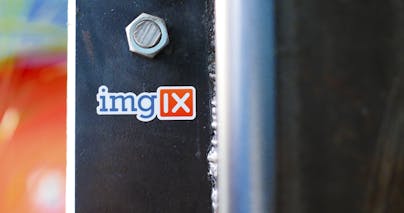
Image Outpainting With fill=generative
Generative Fill marks a significant advancement in imgix's image transformation capabilities, enabling users to extend and fill images with context-aware AI. We are excited to introduce several new Generative Fill parameters that will allow you to outpaint and enhance the versatility of your images:
- Customize aspect ratios — Adapt your images to an aspect ratio that fits your platform requirements and apply the fill to generate pixels that complete the picture with
fit=fill&fill=gen&ar=x:y. - Adjust your focal point — Position the focal point of your image where you want it on the canvas with
fill-gen-pos. - Generate with prompts — Guide the output of the fill with prompts with
fill-gen-promptandfill-gen-neg-prompt. - Achieve consistent results — Use seed values to achieve consistent results or explore variations without altering your original vision with
fill-gen-seed.
Additionally, you can transform your images with Generative Fill within the Image Editor in the imgix Dashboard. See our documentation to learn more about how you can use this feature.
Generative fill is currently available for imgix customers on certain plans. If you’re interested in this feature, please contact our sales team or your Account Manager to get more information on this feature.
Using auto=format as a Default Parameter
With recent technological advancements, it's become easier to move business logic closer to our end-users, specifically into CDN edge nodes. As such, we're excited to now offer the ability to set auto=format as a default parameter for all customers on a paid plan. You can use the imgix Management API or Dashboard Source Configuration to update your default parameters.
Origin Request Authentication
We have expanded your options to aid in identifying requests to your origin server coming from imgix. For Web Folder and Web Proxy Sources you can configure one or more of the following:
- Basic Authentication — Set a username and password that will be sent in an
Authorizationrequest header. - Handshake — Set a handshake secret that will be delivered in an
X-Imgix-Origin-Secretheader. - Request Signing — Set a signing key that will be used to deliver time-based signatures in a series of
X-Imgix-Signaturerequest headers.
See our documentation for more details on how to use this new feature with your Web Folder or Web Proxy sources, and a better understanding of when you might use one option over another. We will deliver future communication around how these new options will replace IP allow listing.
Note: For all S3, GCS, Azure, and S3-compatible source types the read credentials supplied during Source setup are enough to ensure restricted authorized access to your origin buckets.
Other Features and Fixes
- The imgix Rendering API now supports using the AVIF file type as an input.
- Asset Refresh has long existed in the imgix Management API, and can now be triggered within Asset Manager. Refreshing will force a reprocess on a specific asset in your origin to ensure any modifications or deletion takes effect.
- Expanded our "Load to Encode" video processing to trigger on requests for thumbnails and storyboards in addition to video playback.
- We’ve updated our HTTP response codes to better distinguish between imgix errors and customer origin errors. The new
424response status will indicate that imgix is having an issue accessing the requested origin asset, most likely indicating an issue with the customer’s origin. Any5xxerror will indicate an imgix internal issue. - Fixed an issue that was causing some inconsistent output when using
crop=focalpoint. - Updated support for SVGs that contain inline
<image>tags. - Fixed an issue with using
rectandupscalesimultaneously.





